Papers by Anastasia Vergaki

Journal of Prehistoric Religion Volume XXVIII, 2024, 2024
Palaces are considered the central administrative and religious institutions of Late Bronze Age C... more Palaces are considered the central administrative and religious institutions of Late Bronze Age Crete through their control of social ties and social mobility. A closer look at the archaeological record from Palatial and Postpalatial sites across Crete indicates the performance of convivial events in which high-value types of pottery were used as a means for social display. Conical, ovoid, and bull-shaped rhyta made of fine ware and bearing elaborate decorations with semiotics of socio-political character and symbolism comprised the core-equipment of gatherings that were typically organized on the upper floors of buildings. This finding reinforces what has already been widely accepted regarding the fundamental character of feasting practices in Crete, which attained a key-role in social reproduction both before and after the establishment of the “palaces.” It also allows us to reconsider social organization in Minoan Crete and the significance of the palatial centers. Minoan society may be seen as a complex web entangling a dynamic interplay of differing levels of social organization and hierarchy.
The symposium will be hosted online by Dokuz Eylül University Archaeology and Archeometry Applica... more The symposium will be hosted online by Dokuz Eylül University Archaeology and Archeometry Application and Research Center in Türkiye and the Irish Institute of Hellenic Studies at Athens on 28-29 November 2024 via Zoom platform. The symposium language will be english and the presentations will have a duration of 20 minutes.
All abstracts should not exceed 300 words and include name, title and affiliation.
Abstracts should be sent to vergakia@tcd.ie
Deadline to send the abstracts: 01.09.2024
Announcement of the accepted papers: 15.09.2024
The papers will be published in Dokuz Eylul University Press and therefore specific deadlines will be announced after the the symposium ends for the preparation of the relevant articles.

Sympozjum Egejskie, vol. 4 Papers in Aegean Archaeology Stephanie Aulsebrook, Katarzyna Żebrowska, Agata Ulanowska (eds), 2023
The Neopalatial Period (c. 1700-1500/1450 BC or Middle Minoan IIIB-Late Minoan IB according to th... more The Neopalatial Period (c. 1700-1500/1450 BC or Middle Minoan IIIB-Late Minoan IB according to the pottery chronology) in prehistoric Crete has been regarded as a time of affluence. This was reflected in all material culture including domestic architecture, which primarily consisted of monumental architectural forms such as the 'Minoan Hall'. This paper argues that the so-called 'palatial' character of the Minoan Hall, which in fact seems to have been the result of creative experimentation in the wider community during the Final Prepalatial/Early Protopalatial Period, related to practical and social needs. Moreover, it is postulated that the importance of accumulating productive surplus by wealthy houses, and consequently the necessity of its storage, resulted in the development of spacious halls within buildings, divided by pier-and-door partitions. These halls gave people direct access to groups of rooms used for short-term storage or industrial activities, with a likely association with events of conspicuous consumption.

Annual of the British School at Athens, 2023
Feasts in Bronze Age Crete are an important manifestation of material culture. Indications of fea... more Feasts in Bronze Age Crete are an important manifestation of material culture. Indications of feasting can be identified in funerary, palatial, and domestic archaeological contexts. As a result of scholarship traditionally focusing on the religious character of funerary practices and palatial feasting, convivial activities within the domestic sphere have been neglected and/or misinterpreted. As a result of this research bias, there is a notable gap in the record of in-depth archaeological analysis of the social, political and ideological reasons of performing a feast in a domestic environment (or within the bounds of a settlement itself). Researchers have found it hard to distinguish between different types of feasts based on the associated cultural material, consequently leading to misinterpretations regarding the differences in feasting symbolism and the contribution of feasting to social organisation. The re-examination of published material from the Neopalatial (c. 1700‒1500/1450 BC or Middle Minoan IIIB‒Late Minoan IB in pottery terms) sites of Pseira, Mochlos and Gournia in eastern Crete reveals that specific patterns of feasts were in fact in existence and socially performed. Furthermore, the data suggest that feasts in settlements functioned as politically motivated rituals which played a leading role in the formation of social organisation through intra-community antagonisms.

METIOESSA. Studies in Honor of Eleni Mantzourani. AURA Supplement 10.Athens: AURA and Kardamitsa editions
The Aghia Triadha Sarcophagus is one of the most important artifacts of the Final Palatial period... more The Aghia Triadha Sarcophagus is one of the most important artifacts of the Final Palatial period in Minoan Crete, attracting the interest of archaeologists for its unprecedented figurative representations. However, scholars mostly aim at understanding religious beliefs through the reconstruction of the ritual action or actions depicted, and always within the interpretive framework of an anthropocentric methodological approach. By contrast, this paper focuses on the depiction of animals and especially those illustrated on the sacrificial scene. The stylistic study of the images, particularly the rendering of the eyes, may lead to significant observations about the evolution of Minoan iconography, and most importantly about animal–human relations, and the animals’ position within Minoan society.

The Doctoral Thesis under the title “Domestic rituals in Crete during the Neopalatial Period: the... more The Doctoral Thesis under the title “Domestic rituals in Crete during the Neopalatial Period: the cases of Pseira, Mochlos and Gournia” is an effort of re-examining the archaeological record from a bottom up point of view by implementing contextual analysis. Three minoan sites in the Gulf of Mirabello have been selected for study, Pseira, Mochlos and Gournia. The Thesis is comprised by six chapters which are summarized as follows. The 1st Chapter is the “Introduction” in which the topic and the aims of this research are mentioned at the beginning. The detection of acts of special purpose (rituals) in these communities and their contribution to social organization are the main goals. Also, the effects of rituals on the formation of social ties as well as the rules that govern the normal functioning of the societies of the above settlements are sought. Thus, the detection of those characteristics that distinguish the private from the public/communal ritual is a key issue of the presen...

Η Διδακτορική Διατριβή υπό τον τίτλο «Οι οικιακές τελετουργίες στην Κρήτη κατά την Νεοανακτορική ... more Η Διδακτορική Διατριβή υπό τον τίτλο «Οι οικιακές τελετουργίες στην Κρήτη κατά την Νεοανακτορική Εποχή: Οι περιπτώσεις της Ψύρας, του Μόχλου και των Γουρνιών» αποτελεί μία προσπάθεια επανεξέτασης της αρχαιολογικής μαρτυρίας, υπό μία κάτωθεν οπτική εφαρμόζοντας συγκειμενική μεθοδολογία. Επιλέγονται προς εξέταση τρεις μινωικές θέσεις της Βορειοανατολικής Κρήτης, στον Κόλπο του Μιραμπέλλου, η Ψύρα, ο Μόχλος και τα Γουρνιά. Αποτελείται από έξι (6) κεφάλαια, τα οποία έχουν ως εξής. Το 1ο Κεφάλαιο αποτελεί την «Εισαγωγή» της διατριβής. Αναφέρονται το θέμα και οι σκοποί της έρευνας, που επικεντρώνονται στην ανίχνευση πράξεων ειδικού σκοπού (τελετουργιών) σε αυτές τις κοινότητες καθώς επίσης της συμβολής τους στην κοινωνική οργάνωση. Ακόμα, αναζητούνται οι επιδράσεις των τελετουργιών στην συγκρότηση των κοινωνικών δεσμών και των κανόνων που διέπουν την ομαλή λειτουργία των κοινωνιών των ως άνω οικισμών, οι οποίοι απέχουν από τα μεγάλα, κεντρικά ανάκτορα της μινωικής Κρήτης. Επίσης, η ανίχνε...

Chronika. Institute for European and Mediterranean Archaeology, 2020
Ritual and cult have interested Aegean prehistoric research since its th century. However, establ... more Ritual and cult have interested Aegean prehistoric research since its th century. However, established approaches to ritual are still hindered by theoretical and methodological shortcomings. Most old and traditional research with certainty. Studies that have alternatively examined the social dimension of ritual usually restrict themselves to its instrumental role in the ideological legitimization of complex power phenomena, such as the Minoan palaces. Methodologically, both approaches concentrate on buildings and artifacts with no obvious daily function, ending up to attribute a ritual character to each and every enigmatic or uninterpretable The present paper argues that the above research pitfalls may be cult in Bronze Age Crete, it examines indicative assemblages from the Minoan settlement sites of Pseira, Mochlos and Gournia. It focuses on ritual activities at the small scale and in relation to the basis of the Minoan social pyramid, so as to outline a holistic approach to the to highlight the importance of a contextual methodology and renew the "Ritual" Contexts Revisited.
Νομισματικά Χρονικά, τ. 33., 2015
The postgraduate students of Prehistoric Archaeology at Athens welcome paper submissions for thei... more The postgraduate students of Prehistoric Archaeology at Athens welcome paper submissions for their 2nd Conference, titled Society and Economy in the Eastern Mediterranean from the Paleolithic to the Late Bronze Age. The Conference will be held at the National and Kapodistrian University of Athens on 26-27 May 2016.
Drafts by Anastasia Vergaki

Noescape conference , 2020
The depiction of the animals on the Ayia Triadha Sarcophagus There is no doubt, that the Ayia Tri... more The depiction of the animals on the Ayia Triadha Sarcophagus There is no doubt, that the Ayia Triadha Sarcophagus is the only burial find of Minoan Crete which bears such elaborate narrative depictions. However, despite its importance to Minoan archaeology and art of the Late Bronze Age Aegean in general, it has been poorly studied. Our attention has always been focused on the ritual rather than iconographic details and/or potential communicative intentions of the artist. Special reference should be made to Charlotte Long, who has published the only detailed study of the artifact up to now. The present paper's goal is not an anthropocentric approach which will interpret peoples' behavior and their burial habits through the relevant ritual actions as they are unwrapped on the sarcophagus. After all, this has already been done. It aims to draw attention to the living, iconographic micro-scale. More specifically, observations and interpretative approaches will be made regarding the secondary non-human persons, namely the animals to be sacrificed. Particular attention will be paid to the naturalism which characterizes the depiction of their eyes and their expressions. This study aims to reach conclusions as far as the evolution of Minoan iconography is concerned. Furthermore, an effort will be attempted in order to investigate the contribution of animals to the economic development, emancipation and organization of minoan society.

Εισαγωγή. 6. Μεθοδολογία. 7. Χρονολογικός Πίνακας. 11. ΜΕΡΟΣ Β΄ Κοινοτικοί Τάφοι Νεκροταφείο Κουμ... more Εισαγωγή. 6. Μεθοδολογία. 7. Χρονολογικός Πίνακας. 11. ΜΕΡΟΣ Β΄ Κοινοτικοί Τάφοι Νεκροταφείο Κουμάσας.13.Θόλος Β. 13. Θυμιατήρια αναρτώμενα αγγεία. 13. Πυξίδες. 15. Προχυτικά αγγεία.15. Μικρογραφικά αγγεία. 16. Ρυτά. 16. Χρωματοτρίπτες. 17. Σύνθετα αγγεία πολλαπλών προσφορών. 18. Ειδώλια (κυκλαδικού τύπου). 19. Ειδώλια (μινωικού τύπου). 20. Εγχειρίδια. 21. Τάφοι Α, Γ και Ε. Υπαίθριοι, πλακόστρωτοι χώροι Δ και ΑΒ. 22. Κύπελλα. 22. Ρυτά. 22. Προχυτικά αγγεία. 23. Πυξίδες. 24. Σύνθετα αγγεία πολλαπλών προσφορών. 24. Εγχειρίδια. 25. Λεπίδες οψιανού. 26. Πήλινα ανθρώπινα μέλη. 26. Ανακεφαλαίωση. 26 Νεκροταφείο Αγίας Τριάδας. 27. Θόλος Α. 27. Πυξίδες. 27. Μικρογραφική πυξίδα. 28. Κύπελλα. 28. Προχυτικά αγγεία. 30. Δοχεία-Λοπάδες. 31. Χρωματοτρίπτες. 31. Ειδώλια. 32. Πήλινα ανθρώπινα μέλη. 33. Εγχειρίδια. 33. Δίσκος προσφοράς. 34. Ανακεφαλαίωση. 34. Νεκροταφείο Μόχλου. 35. Προχυτικά αγγεία. 36. Κύπελλα. 38. Δοχεία-λοπάδες. 39. Πυξίδες. 39. Ρυτά. 40. Ειδώλια. 40. Χρωματοτρίπτες. 40. Τελετουργικά κέρατα καθοσίωσης. 40. Χάλκινα και άλλα μεταλλικά τελετουργικά αντικείμενα. 41. Ανακεφαλαίωση. 42. Ιερά Κορυφής Γιούχτας. 43. Προχυτικά αγγεία. 44. Δοχεία-λοπάδες. 45. Κύπελλα. 45. Ανθρωπόμορφα ειδώλια. 46. Ζωόμορφα ειδώλια. 49. Χάλκινα αντικείμενα. 50. Λίθινα τελετουργικά αντικείμενα. 51. Ενεπίγραφες τράπεζες προσφορών. 52. Ανακεφαλαίωση. 53. Πετσοφάς. 53. Κύπελλα. 54. Μικρογραφικά αγγεία. 55. Αντικείμενα με πιθανή τελετουργική χρήση. 55. Κέρατα καθοσίωσης. 56. Τράπεζες προσφορών. 56. Χάλκινα αντικείμενα. 57. Ανθρωπόμορφα ειδώλια. 57. Ζωόμορφα ειδώλια. 60. Πήλινα, ανθρώπινα μέλη. 61. Ανακεφαλαίωση. 62. Τραόσταλος. 62. Ανθρωπόμορφα ειδώλια. 63. Πήλινα, ανθρώπινα μέλη. 64. Ζωόμορφα ειδώλια. 65. Αγγεία με πιθανή τελετουργική χρήση. 67. Μικρογραφικά αγγεία. 68. Ανακεφαλαίωση. 68. Ανάκτορα Κνωσός. 70. Βόρεια Δεξαμενή Καθαρμών. 71. Προχυτικά αγγεία. 71. Μικρογραφικά αγγεία. 72. 3 Κεντρικό Ανακτορικό Ιερό-Ευρήματα από το Vat Room Deposit (Δωμάτιο με τις Λεκανίδες) και την Ανατολική Υπόστυλη Κρύπτη. 72. Δωμάτιο με τις Λεκανίδες (Vat Room Deposit). 74. Προχυτικά αγγεία. 74. Μικρογραφικά αγγεία. 75. Κύπελλα. 76. Λεπίδες οψιανού. 78. Ρυτά. 79. Μέταλλα. 79. Ειδώλια. 79. Ανατολική Υπόστυλη Κρύπτη Κεντρικού Ανακτορικού Ιερού. 80. Λοιπή τελετουργική σκευή της Παλαιοανακτορικής Περιόδου. 81. Ανακεφαλαίωση. 81. Φαιστός. 82. Τριμερές Ιερό. 82. Κύπελλα. 83. Προχυτικά σκεύη. 84. Τράπεζες προσφορών και άλλα σπονδικά σκεύη. 86. Τράπεζες προσφορών αδιευκρίνιστου ανασκαφικού περιβάλλοντος. 87. Χρωματορίπτες. 88. Εγχειρίδια. 88. Δωμάτιο ΙL. 89. Κύπελλα. 89. Προχυτικά αγγεία. 91. Δοχεία-λοπάδες. 92. Σπονδικό σκεύος. 92. Εγχειρίδια. 93. Κρανίο αιγοπροβάτου (αγριμιού). 93. Ρυτά. 93. Τελετουργική σκευή από άλλους χώρους του ανακτόρου. 94. Δωμάτιο XLI-102. 94. Δωμάτιο XLI-104. 94. Ανακεφαλαίωση. 95. Μάλια. 95. Αίθουσα VI2. 95. Αίθουσα III1. 97. Αίθουσα ΙV7. 98. Αίθουσα XXVII4. 99. Τομέας XVIII. 99. Δοχεία-λοπάδες. 100. Κύπελλα. 100. Προχυτικά σκεύη. 101. Σύνθετα αγγεία πολλαπλών προσφορών. 101. Ειδώλια. 102. Πλακίδιο με graffito. 102. Κέρατα αιγοπροβάτου (αγριμιού). 103. Ανακεφαλαίωση. 103. ΜΕΡΟΣ Γ΄ Συζήτηση. 105. Θυμιατήρια. 105. Πυξίδες. 106. Προχυτικά αγγεία. 107. Μικρογραφικά αγγεία. 110. Ρυτά. 113. Χρωματοτρίπτες. 115. Σύνθετα αγγεία, τράπεζες προσφορών. 117. Ειδώλια και ομοιώματα ανθρώπινων μελών. 121. Εγχειρίδια, ξίφη. 126. Κύπελλα και λοπάδια. 128. Λεπίδες οψιανού. 131. Κέρατα καθοσίωσης. 133. Διπλοί πελέκεις. 135. Τα αιλουροειδή. 136. Το ζήτημα της τελετουργικής θραύσης. 137. Συμπεράσματα……………………………………………………………………..139 Συντομογραφίες……………………………………………………………………148 Βιβλιογραφία………………………………………………………………………149
Thesis Chapters by Anastasia Vergaki

The Doctoral Thesis under the title “Domestic rituals in Crete during the Neopalatial Period: the... more The Doctoral Thesis under the title “Domestic rituals in Crete during the Neopalatial Period: the cases of Pseira, Mochlos and Gournia” is an effort of re-examining the archaeological record from a bottom up point of view by implementing contextual analysis. Three minoan sites in the Gulf of Mirabello have been selected for study, Pseira, Mochlos and Gournia. The Thesis is comprised by six chapters which are summarized as follows.
The 1st Chapter is the “Introduction” in which the topic and the aims of this research are mentioned at the beginning. The detection of acts of special purpose (rituals) in these communities and their contribution to social organization are the main goals. Also, the effects of rituals on the formation of social ties as well as the rules that govern the normal functioning of the societies of the above settlements are sought. Thus, the detection of those characteristics that distinguish the private from the public / communal ritual is a key issue of the present work.
The 2nd Chapter under the title “History of research” presents in chronological order all the studies, which have decisively contributed to the image that has been formed in the archeology of the Bronze Age Aegean as far as domestic rituals and cult in Minoan Crete is concerned. It detects the methodological gaps, as well as their interpretive weaknesses, without, however, omitting the promotion of those theories, which are the most important and are a timeless basis for scholars.
The 3rd Chapter “Theoretical and methodological approaches” is the theoretical and methodological basis on which this dissertation is based in order to interpret the archaeological data and is divided into six parts. New definitions are proposed for the terms “ritual” and “ritual equipment”. In the 4th Chapter under the title “Presentation of the archaeological data under study”, the material (architecture and movable finds) is recorded by location, house and room, always applying a contextual approach. Six (6) houses and two (2) open spaces (courts) were examined at Pseira, eight (8) houses at Mochlos and eighteen (18) houses at Gournia.
The 5th Chapter includes the “Synthesis of data” where the architectural types as well as the utensils which are traditionally considered as ritual were thoroughly studied. Their study was based on bibliography as well as on comparative material from other sites of neopalatial Crete. In this chapter it becomes clear that applying a contextual methodology for each case results in original findings, which can be considered very reliable.
Finally, in the 6th Chapter the final conclusions of the Thesis are presented concerning the use of the architectural types (ritual or practical) and their division into sub-categories so that different types of rooms are not confused. Furthermore, the final findings regarding the use of movable objects (ritual and/or for daily activities) are formulated. The types of domestic rituals which were observed in the three settlements examined are also stated as well as their contribution to social organization.
Conference Presentations by Anastasia Vergaki
Tüm hakları saklıdır. Bu kitabın tamamı ya da bir kısmı yazarların izni olmaksızın elektronik, me... more Tüm hakları saklıdır. Bu kitabın tamamı ya da bir kısmı yazarların izni olmaksızın elektronik, mekanik, fotokopi ya da herhangi bir kayıt sistemi ile çogaltılamaz, yayınlanamaz, depolanamaz.

Death, Rituals and Symbolism in Prehistoric Aegean ARWA International Online Workshop Dedicated to the Memory of Hayat Erkanal 11 – 12 December 2022, 2022
The Mesara Plain and the Asterousia Mountains have been an area of intensive archaeological resea... more The Mesara Plain and the Asterousia Mountains have been an area of intensive archaeological research for more than a century. That research regarded, principally, the emergence and development of the vaulted tombs, which were mainly deployed in this region as well as their connection to the surrounding local communities. Moreover, rituals that used to be performed in funerary contexts have traditionally been interpreted as related to the worship of chthonic divinities and/or to the honoring of the dead ancestors. In contrast, this paper focuses on those funerary data (architecture and portable finds), which indicate that the tholoi may be seen as a primary expression of the prevalence and control of specific groups of people over the multitude. More specifically, rituals in a funerary context could have worked as actions aiming to the re-affirmation and/or re-negotiation of social ties and relationships, which seem to have been constantly negated, while ritual objects were being used as symbols of power and of the emergence of new social trends. It will be argued, through comparative and contextual analysis, that the communal tholoi tombs, may have had developed into a field of intra and/or inter communal competitiveness, whilst the Mesara Plain and the Asterousia Mountains may be considered as the fountain of much later forms of social organization and political integration in prehistoric Crete.

INTERNATIONAL SYMPOSIUM CULTURAL CONTINUITY, CHANGE AND INTERACTION IN THE AEGEAN WORLD FROM THE SECOND TO FIRST MILLENIUM BC, 2022
The Neopalatial period- (c. 1700-1500 BC or Middle Minoan IIIB - Late Minoan IB in pottery terms)... more The Neopalatial period- (c. 1700-1500 BC or Middle Minoan IIIB - Late Minoan IB in pottery terms), marked the heyday of the Minoan society, and ended with the disastrous volcanic eruption of Santorini and its social reverberations. This period has been regarded as a time of affluence, owing to the many and elaborate court-centered buildings, frequently called palaces, and the villas, namely their smaller scale counterparts. The “palaces” are considered as the central administrative and religious institutions that kept under their control social ties and social mobility. The political nature regarding social organization in Minoan Crete trace its origins to Evans' Edwardian aristocratic conceptions or to Diffusionism (ex oriente lux) as well as to newer political conservative top-down models of society, such as systemic models with their need for managers or system regulators. However, a closer look in the archaeological record from neo-palatial settlements across Crete, indicates the performance of feasts, in which high-value types of pottery were used as a means of social display. More specifically, conical/ogival rhyta as well as bull-shaped rhyta made of fine ware and bearing elaborate decorations along with symbolisms of socio-political character, comprise the core-equipment of Eclectic Feasts that used to be organized on the upper floors of buildings. This finding reinforces what has already been widely accepted regarding the fundamental character of feasting practices in Minoan Crete, which attained a key-role in social reproduction both before and after the establishment of the palaces. It also allows us to reconsider the social organization of Minoan Crete and the significance of the palaces. Instead of a hierarchical society topped by a leader or an elite group, Minoan society may be seen as a complex web entailing a dynamic interplay of different levels of social organization and hierarchy.

The majority of the neo-palatial architectural features have been identified as an endeavor by th... more The majority of the neo-palatial architectural features have been identified as an endeavor by the social elite to promote its power, material wealth, knowledge and its distinct place within the social pyramid. Other scholars have suggested that neo-palatial architecture consists of modularities, such as the Minoan Hall, which served in order to host ritual actions conducted by members of the elite, communal gatherings or to allow the circulation of light and ventilation. However, the contextual re-examination of the archaeological data, under a top-down point of view, from several neo-palatial sites, has indicated not only the long evolutionary course of the Minoan Hall since the Final Pre-palatial/Early Proto-palatial period as a creative experimentation of the maltitude, but also the variety of its sub-types and the presence of storage rooms in its vicinity. It seems that the need of accumulating productive surplus and consequently the importance of its storage resulted to the development of spacious areas within a building, comprised of multiple doors or pier and door partitions, which could give direct and/or indirect access to groups of storerooms or storage systems within a building. The aforementioned internal spatial layout became essential and it is found not only in the so-called villas or the “palaces” but in domestic environments in general. As a result, this finding leads us to wonder whether it is social display which determines designing in Minoan architecture or is it just every day, practical needs which impose a specific internal planning.
The impact of the political on archaeological research A Spring School in the framework of the international research programme The Construction of Knowledge in Archaeology and Art History in Southeastern Europe Centre for Advanced Study, Sofia. 19-24 April 2021, 2021
The Neopalatial period-(c. 1700-1500 BC or Middle Minoan IIIB-Late Minoan IB in pottery terms), m... more The Neopalatial period-(c. 1700-1500 BC or Middle Minoan IIIB-Late Minoan IB in pottery terms), marked the heyday of the Minoan palatial society, and ended with the disastrous volcanic eruption of Santorini and its social reverberations.
Talks by Anastasia Vergaki

Professor Nikolaos Platon excavated the first Minoan tholos tomb in eastern Crete in 1959, near t... more Professor Nikolaos Platon excavated the first Minoan tholos tomb in eastern Crete in 1959, near the modern village of Myrsini in the district of Siteia. It is only during the last few years that two more tholos tombs have come to light in the same wider area around Myrsini, at the sites of Mesorrachi and Livari Skiadhi. All these three east Cretan tholoi were built at the beginning of the Early Minoan period. However, while the Mesorrachi and Livari tholos tombs were used for a short period of time, Myrsini features a long-life and continuity of use, similarly to many tholos tombs in south-central Crete. Hence, Myrsini constitutes a unique example of a tholos tomb as it is outside from and yet comparable to the tombs in the assumed “homeland” of this type of funerary architecture. For this reason, its examination promises to shed more light on the appearance of tholos tombs in eastern Crete, regarding not only the architectural form but also the funerary practices that took place at Myrsini. What are the social and/or cultural characteristics of the group that built and used the tomb? How is Myrsini part of the funerary and social context of Early and Middle Bronze Age eastern Crete? What was its relationship with the remote and yet tholos tomb core area of south-central Crete? These are some of the questions that the present study addresses.



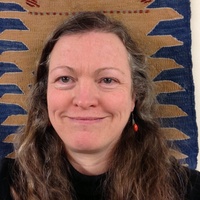
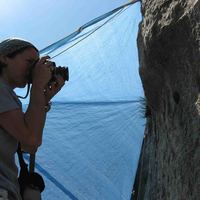
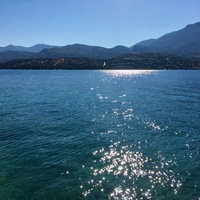
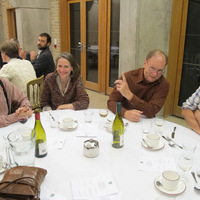
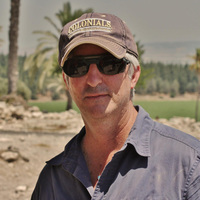

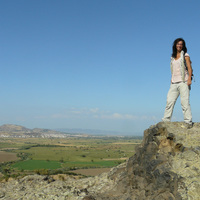

Uploads
Papers by Anastasia Vergaki
All abstracts should not exceed 300 words and include name, title and affiliation.
Abstracts should be sent to vergakia@tcd.ie
Deadline to send the abstracts: 01.09.2024
Announcement of the accepted papers: 15.09.2024
The papers will be published in Dokuz Eylul University Press and therefore specific deadlines will be announced after the the symposium ends for the preparation of the relevant articles.
Drafts by Anastasia Vergaki
Thesis Chapters by Anastasia Vergaki
The 1st Chapter is the “Introduction” in which the topic and the aims of this research are mentioned at the beginning. The detection of acts of special purpose (rituals) in these communities and their contribution to social organization are the main goals. Also, the effects of rituals on the formation of social ties as well as the rules that govern the normal functioning of the societies of the above settlements are sought. Thus, the detection of those characteristics that distinguish the private from the public / communal ritual is a key issue of the present work.
The 2nd Chapter under the title “History of research” presents in chronological order all the studies, which have decisively contributed to the image that has been formed in the archeology of the Bronze Age Aegean as far as domestic rituals and cult in Minoan Crete is concerned. It detects the methodological gaps, as well as their interpretive weaknesses, without, however, omitting the promotion of those theories, which are the most important and are a timeless basis for scholars.
The 3rd Chapter “Theoretical and methodological approaches” is the theoretical and methodological basis on which this dissertation is based in order to interpret the archaeological data and is divided into six parts. New definitions are proposed for the terms “ritual” and “ritual equipment”. In the 4th Chapter under the title “Presentation of the archaeological data under study”, the material (architecture and movable finds) is recorded by location, house and room, always applying a contextual approach. Six (6) houses and two (2) open spaces (courts) were examined at Pseira, eight (8) houses at Mochlos and eighteen (18) houses at Gournia.
The 5th Chapter includes the “Synthesis of data” where the architectural types as well as the utensils which are traditionally considered as ritual were thoroughly studied. Their study was based on bibliography as well as on comparative material from other sites of neopalatial Crete. In this chapter it becomes clear that applying a contextual methodology for each case results in original findings, which can be considered very reliable.
Finally, in the 6th Chapter the final conclusions of the Thesis are presented concerning the use of the architectural types (ritual or practical) and their division into sub-categories so that different types of rooms are not confused. Furthermore, the final findings regarding the use of movable objects (ritual and/or for daily activities) are formulated. The types of domestic rituals which were observed in the three settlements examined are also stated as well as their contribution to social organization.
Conference Presentations by Anastasia Vergaki
Talks by Anastasia Vergaki
All abstracts should not exceed 300 words and include name, title and affiliation.
Abstracts should be sent to vergakia@tcd.ie
Deadline to send the abstracts: 01.09.2024
Announcement of the accepted papers: 15.09.2024
The papers will be published in Dokuz Eylul University Press and therefore specific deadlines will be announced after the the symposium ends for the preparation of the relevant articles.
The 1st Chapter is the “Introduction” in which the topic and the aims of this research are mentioned at the beginning. The detection of acts of special purpose (rituals) in these communities and their contribution to social organization are the main goals. Also, the effects of rituals on the formation of social ties as well as the rules that govern the normal functioning of the societies of the above settlements are sought. Thus, the detection of those characteristics that distinguish the private from the public / communal ritual is a key issue of the present work.
The 2nd Chapter under the title “History of research” presents in chronological order all the studies, which have decisively contributed to the image that has been formed in the archeology of the Bronze Age Aegean as far as domestic rituals and cult in Minoan Crete is concerned. It detects the methodological gaps, as well as their interpretive weaknesses, without, however, omitting the promotion of those theories, which are the most important and are a timeless basis for scholars.
The 3rd Chapter “Theoretical and methodological approaches” is the theoretical and methodological basis on which this dissertation is based in order to interpret the archaeological data and is divided into six parts. New definitions are proposed for the terms “ritual” and “ritual equipment”. In the 4th Chapter under the title “Presentation of the archaeological data under study”, the material (architecture and movable finds) is recorded by location, house and room, always applying a contextual approach. Six (6) houses and two (2) open spaces (courts) were examined at Pseira, eight (8) houses at Mochlos and eighteen (18) houses at Gournia.
The 5th Chapter includes the “Synthesis of data” where the architectural types as well as the utensils which are traditionally considered as ritual were thoroughly studied. Their study was based on bibliography as well as on comparative material from other sites of neopalatial Crete. In this chapter it becomes clear that applying a contextual methodology for each case results in original findings, which can be considered very reliable.
Finally, in the 6th Chapter the final conclusions of the Thesis are presented concerning the use of the architectural types (ritual or practical) and their division into sub-categories so that different types of rooms are not confused. Furthermore, the final findings regarding the use of movable objects (ritual and/or for daily activities) are formulated. The types of domestic rituals which were observed in the three settlements examined are also stated as well as their contribution to social organization.
The Revolution of 1642 was a political revolution; it has, however, a passionate religious character which managed to unite three social classes; those of the bourgeois, of nobles, and of working (lower) class. Puritanism became the glue among those classes which demanded not only the sign of a new ‘social contract’ but also a share to the power. Puritanism’s importance became clearer with the creation of the New Model Army, an army which was victorious in the battlefield. The New Model Army was an army of saints who knew for which reason they fought. Through the battles the name of Oliver Cromwell became well-known in the political life of the state; yet, his political power was not secured at all. The execution of King Charles I, the first execution of a King by his former subjects, was a great radical action which tested the political alliance of the revolutionaries. As the political tensions made their appearance in the army too, and Scotland and Ireland were in turmoil, Cromwell had to act immediately to save the Commonwealth and his political career.
The Irish campaign became a reference point to the history of this island, since its results are still clear three centuries later. The massacres and destructions alongside with the wide colonialism of the island created many and different Irish identities which drove to the separation of the island into two different states. The purpose of the lecture is the investigation of the motives of this campaign as well as the crucial decisions Cromwell had to take against his rivals. Specifically, the present lecture deals with the massacres in Drogheda and Wexford and how these massacres affected the Irish morale, comparing them with the peaceful surrender of the cities of Ross and Clonmel. This comparison it is crucial to answer in the questions below.
Were these massacres a result of Cromwell’s religious zeal, or were they part of his strategy for a swiftly dominion in the island? Did these massacres expand to the civilians, or only the guards and the Catholic priests were executed? The last question has risen a huge argument among the historians. Chistopher Hill and Trevor Royle condemned in their works the execution of the cities’ guards, but they are extremely cautious to accept that among those executions were also civilians. On the contrary, Micheál Ó Siochrú tries to prove that among the victims were also unarmed civilians, while Tom Reilly tries to defend Cromwell against the historians who insist about Cromwell’s cruelty towards Irish.